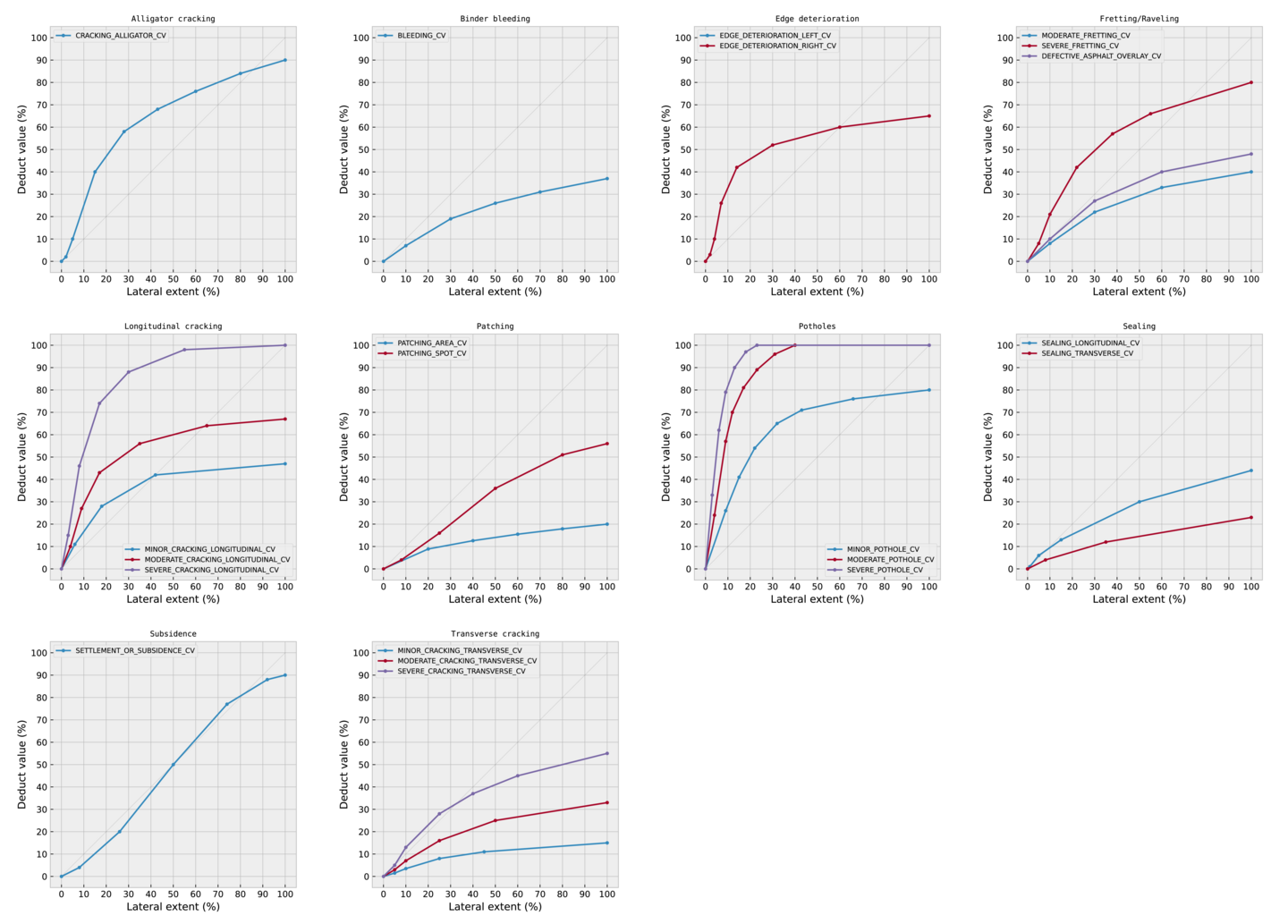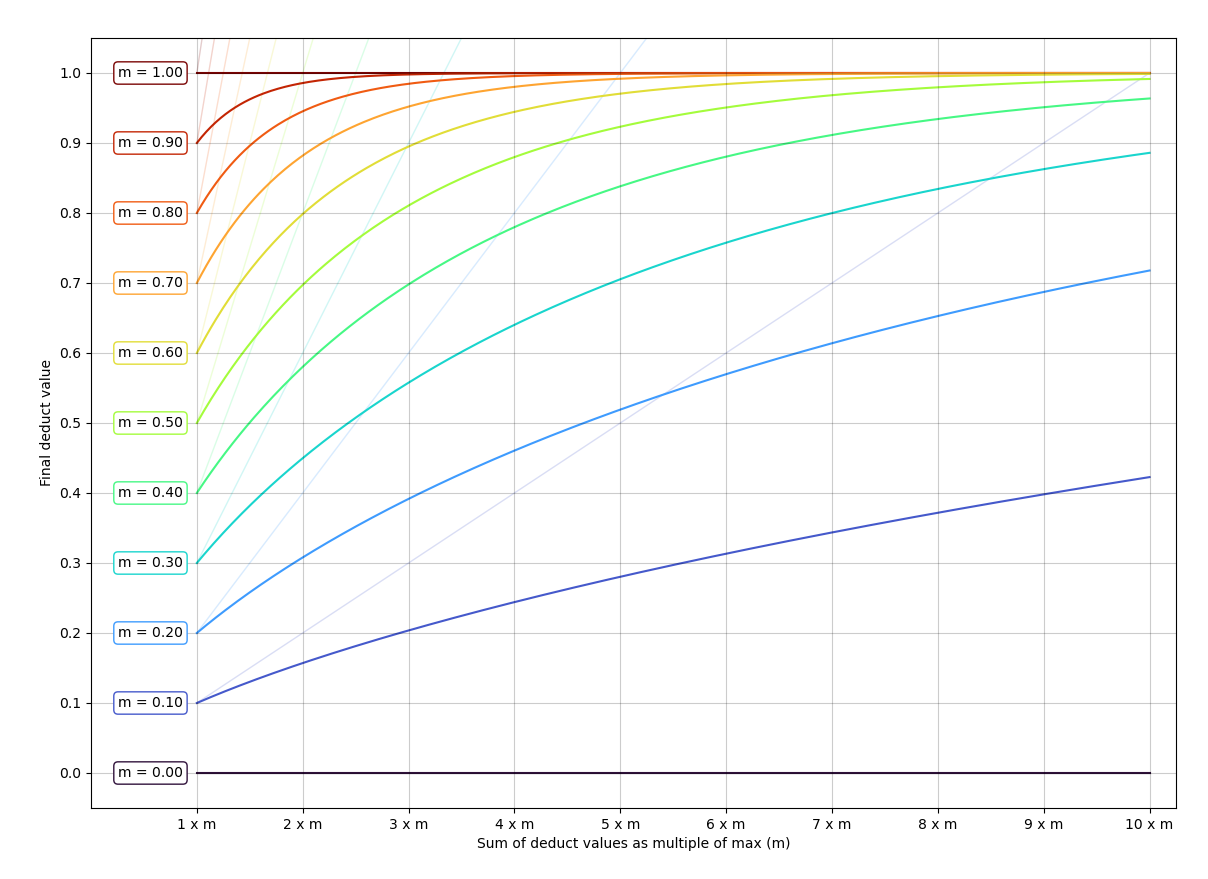Asphalt condition (new)
The Asphalt condition (new), which is the new default condition score, represents the condition of the road surface. It is designed to be used on asphalt surfaces only.
The score is based on deduct value curves and compounding effect limitations similar to the ASTM D6433.

The scoring model limits the compounding effect of multiple distress types detected on the same road section.
The curves below show the compounding effect when the system has detected two or more distress types in the same location, with equal distress-specific deduct values.
For example, two distress types with a deduct value (m) of 0.3 detected on the same location get a combined deduct value of 0.45 (compared to 0.6 with the old scoring model). With three distress types, the combined value is 0.55 (0.9 with the old scoring model).
The actual deduction logic with different distress-specific deduct values works in a similar way. The distress-specific effect of an additional distress type on the combined deduct value decreases as the number of detected distress types increases. Also, the higher the largest distress-specific deduct value is, the more it will dominate the combined deduct value.

